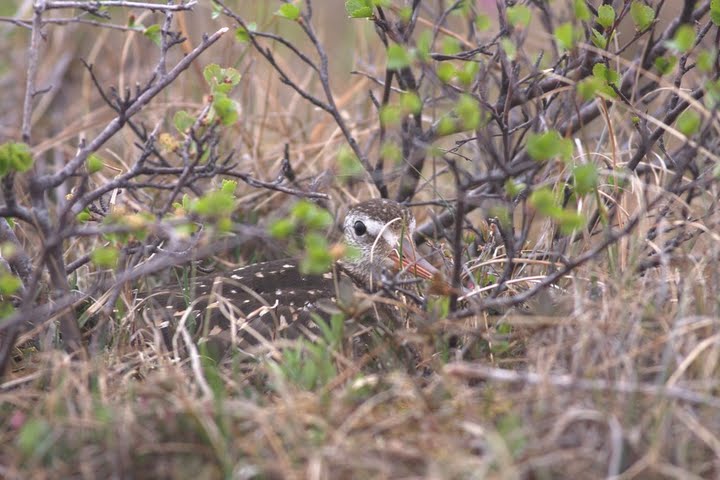All Biology is Local
Submitted by editor on 14 June 2016. Get the paper!
Get the paper!All Biology is Local
One of the most interesting aspects of global climate change is that, while its extent is global, its effects at the regional scale are quite variable. Yet the vast majority of studies focused on the effects of climate change have relied on work at a single site. This can be problematic, as the ranges of many species encompass multiple different climate change regimes. Given the difficulty of determining precisely how climate change should be expected to impact a species at even one site, however, the prospect of doing so across its entire range is not only daunting, but also frequently impractical. Nonetheless, the payoff of monitoring the effects of climate change on a single species at multiple sites can be substantial and the few studies to undertake such efforts have uncovered intriguing intraspecific variation in how climate change is experienced.

A male Hudsonian Godwit calling on territory in Churchill Manitoba. Photo by Thomas B. Johnson.
Our previous work suggested that climate change is having highly variable effects on two different populations of Hudsonian Godwits. Despite utilizing the same migratory corridor for much of their migrations from southern South America to the Canadian and Alaskan Arctic, these godwit populations migrate at different times, employ different migration strategies, and encounter entirely different climate change regimes during their migrations. As a result, the two populations also differ in how climate change is affecting the timing of their arrival at their breeding grounds — one population is now arriving more than 11 days later than they did in the 1970s, while the other is arriving nearly nine days earlier (Senner 2012, Auk; Senner et al. 2014, PLoS One). Entering into this study, we had thus hypothesized that at least one godwit population might be suffering a mismatch with the phenology of their food resources during the breeding season, leading to poor chick growth rates and low reproductive success.

A godwit on a nest in Churchill, Manitoba. Photo by Andrew S. Johnson.
Comparing the synchrony between the reproductive timing of these two godwit populations and the phenology of the local resources on which their chicks depend was no small feat, however. Our field sites were separated by thousands of kilometres and had partially overlapping phenologies, forcing our crews to crisscross the Arctic each summer. Once on the ground, we had to then find godwit nests — requiring nearly 20-25 person hours per nest and many kilometres worth of walking — and track their extremely mobile chicks. Sometimes families moved more than a kilometer per day, making for long treks through flooded bogs and sedge meadows in order to relocate them. All of this was complicated by bears: Polar Bears in Canada and Grizzly and Black Bears in Alaska. The presence of these large and not always friendly mammals meant that everyone had to work in pairs and keep their eyes focused both on the ground, for godwit nests, and the horizon, for potential bear-related trouble — no naps were taken on the tundra. And then there were the insects. Not only did we have to contend with bug bites too numerous to tally, but we also had to capture, count and measure insects as well. Over the course of the study, our team collected more than 100,000 insects at the two sites!

A godwit nest hatching in Churchill, Manitoba. Photo by Shawn M. Billerman.
The effort was well worth it. Our results suggest that the effects of climate change are strongly mediated by local-scale factors that likely only affect a portion of a species’ distribution. In godwits, this dictates that only one of the two studied populations is experiencing a mismatch. Moreover, only older chicks appear to experience the full effects of this mismatch, as their increased metabolic demands directly coincide with the reduction in insect abundance that occurs late in the summer. Climate change is thus affecting populations and species in incredibly complex ways, making broad-scale predictions about a species’ future difficult. We therefore need detailed information on how climate change interacts with other selection pressures occurring across a species’ range in order to accurately predict those populations most at risk to the effects of climate change.
Nathan Senner @nrsenner & Maria Stager @MariaStager